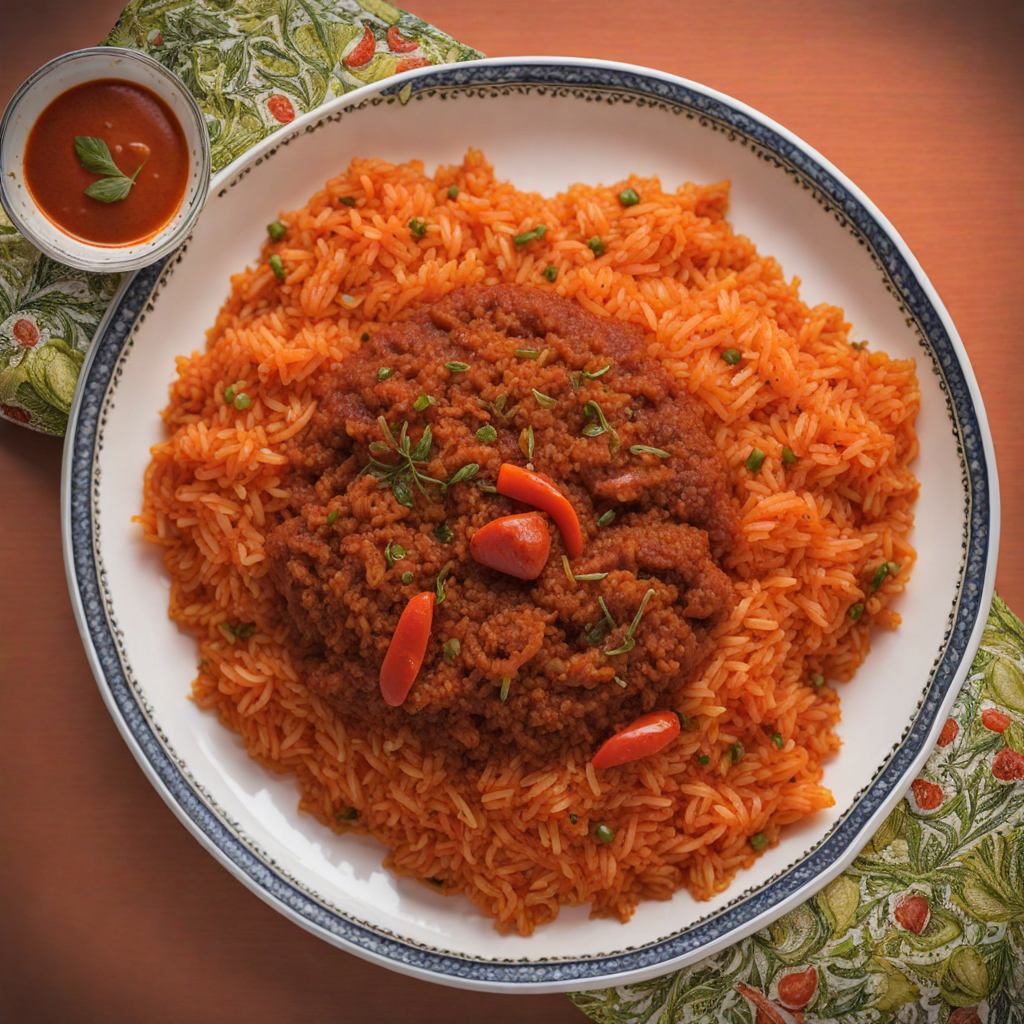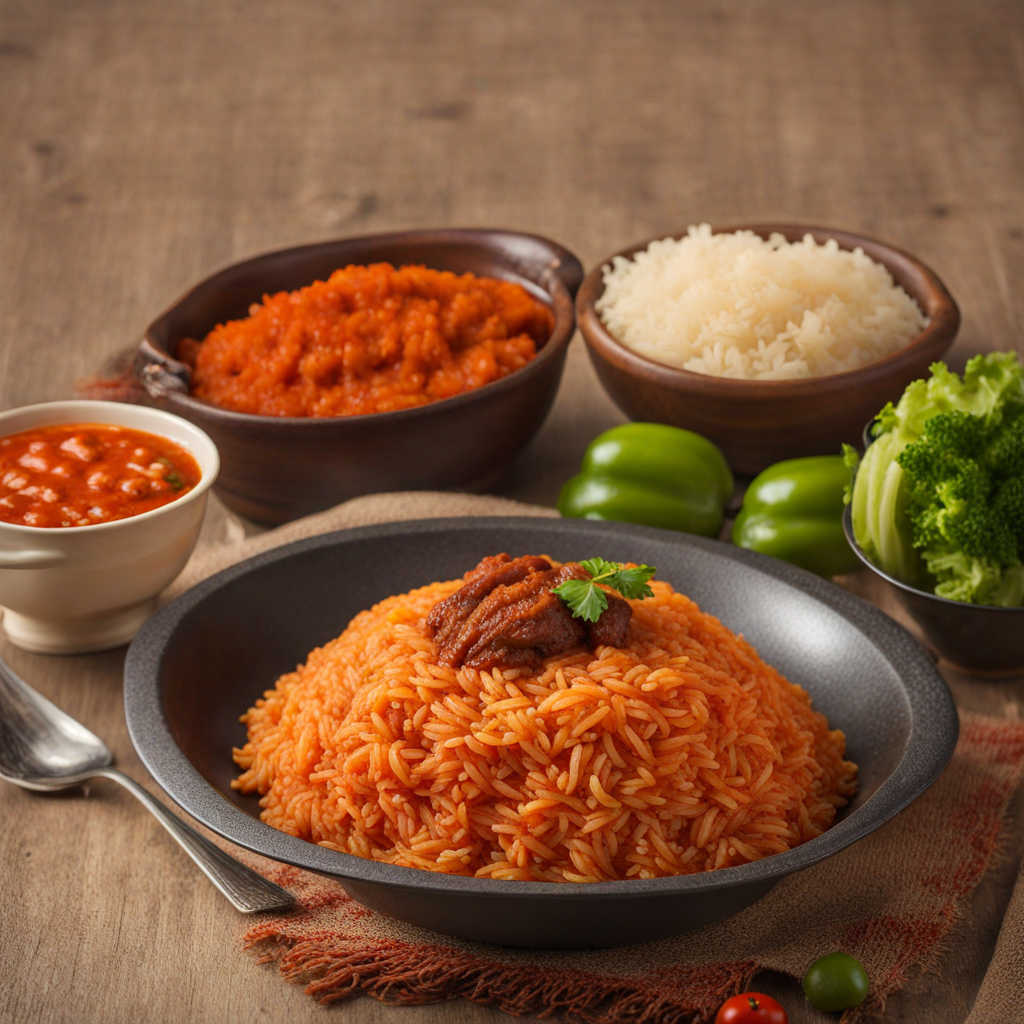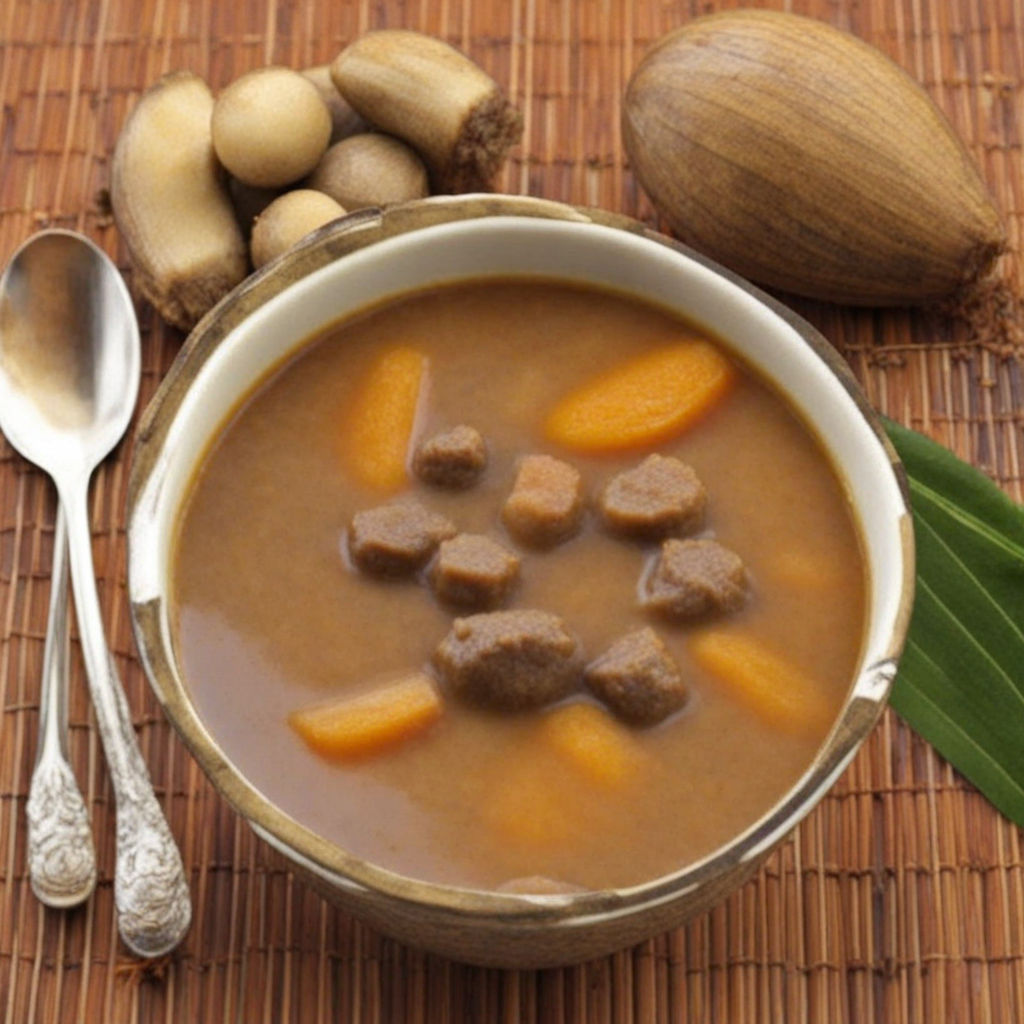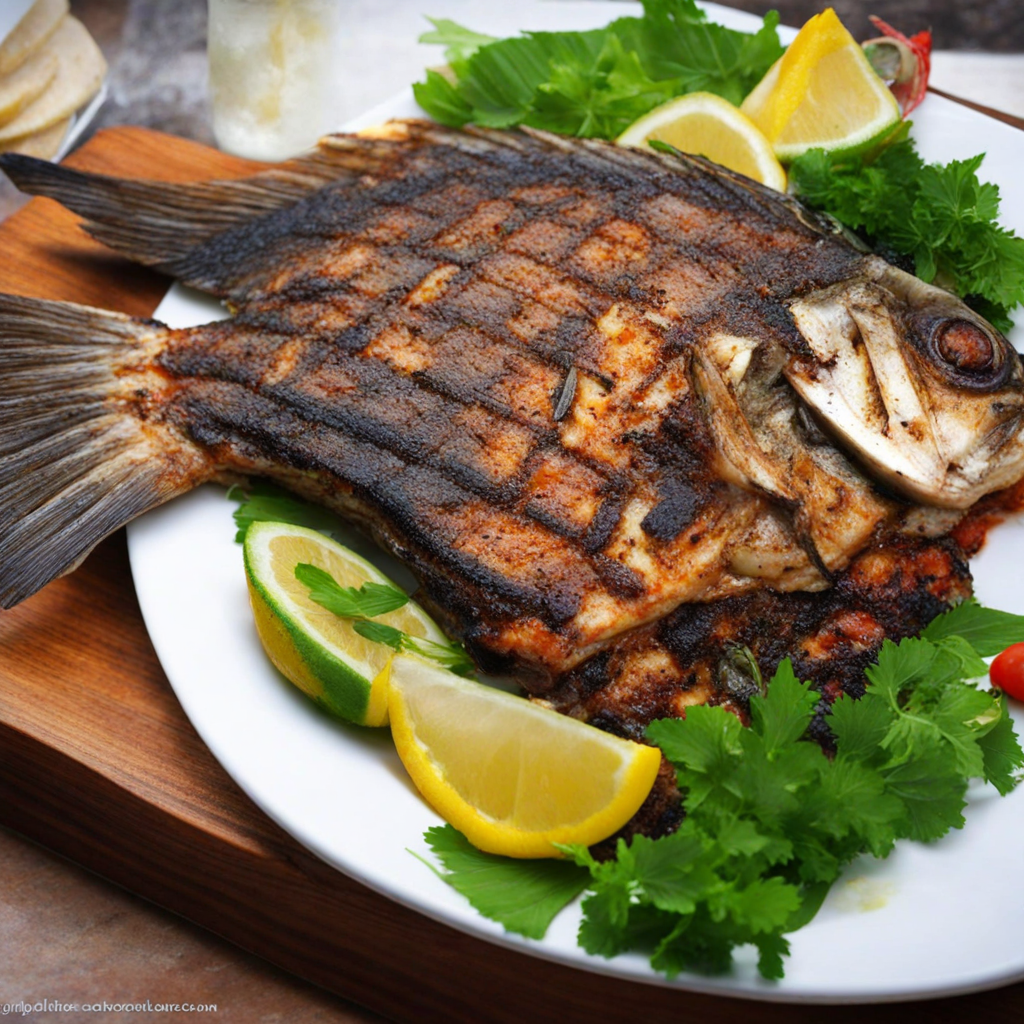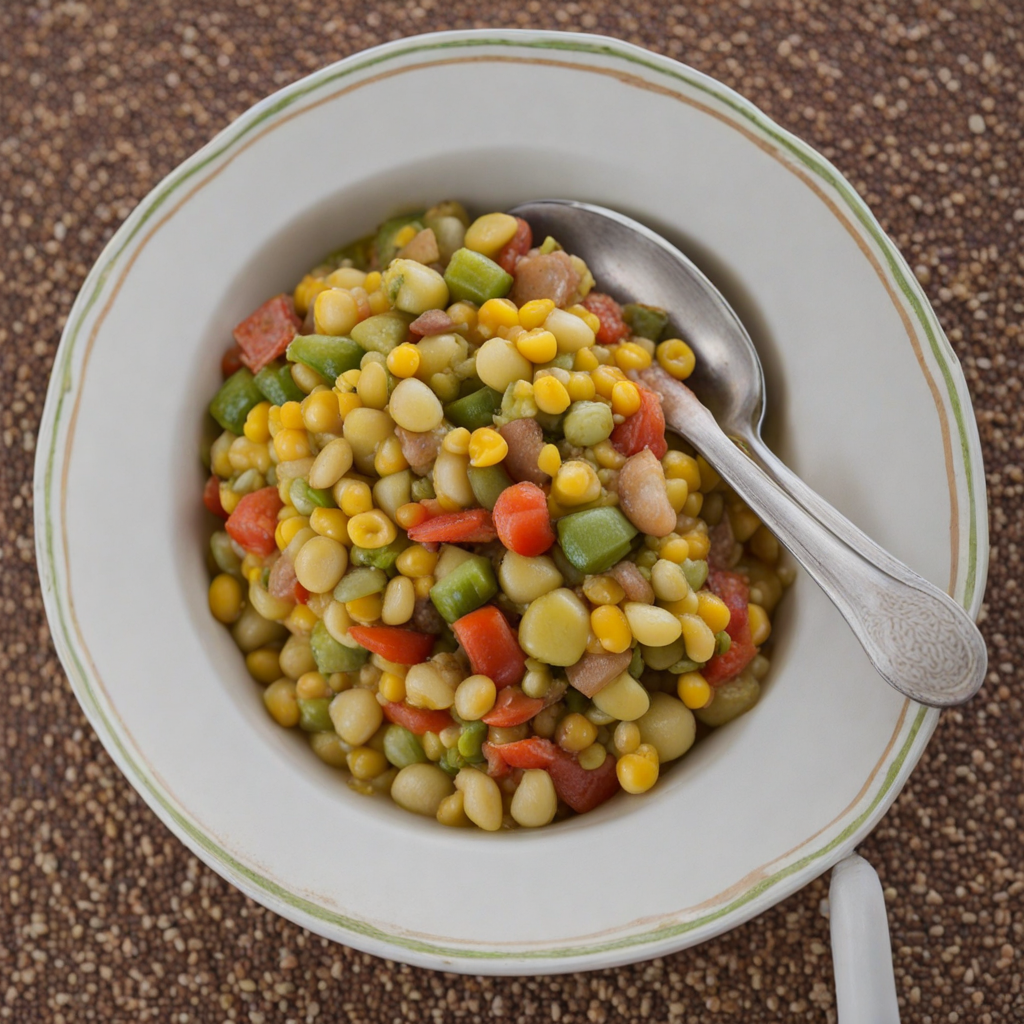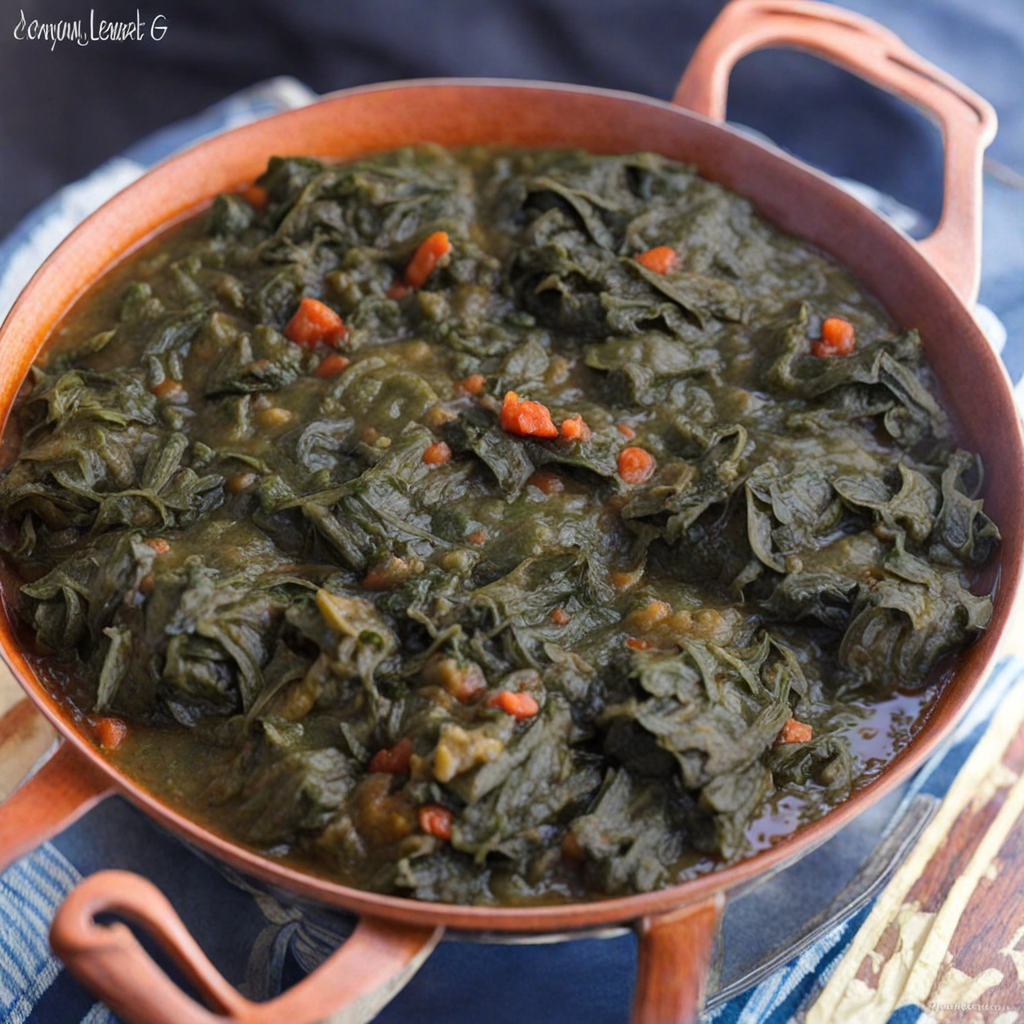Jollof Rice
Jollof Rice is a vibrant and flavorful dish that embodies the essence of West African cuisine, with Equatorial Guinea offering its own unique twist. This one-pot wonder features rice cooked in a rich tomato sauce, infused with a medley of spices, and often combined with vegetables such as bell peppers, onions, and garlic. The base sauce is usually prepared with ripe tomatoes that are blended into a smooth paste and then sautéed, creating a deep, savory flavor that permeates the rice as it cooks. The result is a comforting dish that is both fragrant and inviting, making it a staple at family gatherings and celebrations. What sets Equatorial Guinean Jollof Rice apart is the inclusion of local ingredients that add a distinct flavor profile. Variations may include the addition of coconut milk, which lends a creamy texture and subtle sweetness, or the use of regional spices that enhance the dish's complexity. Accompanying proteins such as chicken, fish, or beef are often marinated and cooked alongside the rice, allowing their juices to meld into the grains, creating a harmonious blend of flavors. The dish is often garnished with fresh herbs, adding a pop of color and freshness that brightens the overall taste. Serving Jollof Rice is an experience in itself, usually presented in a communal style, inviting everyone to dig in together. The rice is typically fluffed to reveal the beautiful layers of color and texture, and is served with a side of fried plantains, a crisp salad, or spicy dipping sauces that complement the dish's richness. Each bite is a celebration of flavor, making Jollof Rice not just a meal, but a cultural experience that showcases the warmth and hospitality of Equatorial Guinea’s culinary traditions.
How It Became This Dish
The Fascinating History of Arroz Jollof: A Culinary Jewel of Equatorial Guinea Arroz Jollof, often simply referred to as Jollof rice, is a vibrant and flavorful dish that has captivated the palates of many across West Africa and beyond. While its roots are deeply entrenched in the culinary traditions of several African countries, the version found in Equatorial Guinea offers a unique twist that highlights the nation’s rich cultural heritage, diverse influences, and evolving gastronomic landscape. #### Origins of Arroz Jollof The origins of Jollof rice can be traced back to the Wolof people of Senegal, where the dish is known as "Jollof." The word "Jollof" itself is believed to derive from the Wolof term "wolof," which refers to both the people and their language. Traditionally, the dish is made with rice, tomatoes, onions, and a variety of spices, creating a one-pot meal that is both hearty and satisfying. As the dish spread throughout West Africa, each region adapted the recipe to reflect local ingredients and culinary preferences. Countries such as Nigeria, Ghana, and Sierra Leone developed their own variations, each claiming superiority in flavor and preparation methods. In Equatorial Guinea, Jollof rice merged with local culinary customs, incorporating unique flavors and ingredients that tell the story of the nation’s complex history. #### Cultural Significance In Equatorial Guinea, Arroz Jollof is more than just a meal; it is a dish steeped in cultural significance. Serving Jollof rice during gatherings, celebrations, and feasts symbolizes unity and hospitality. Whether it’s a wedding, a birthday party, or a national holiday, Arroz Jollof is often the centerpiece of the table, bringing families and friends together in a shared love for food. The preparation of Jollof rice is often a communal effort, especially during significant events. Families come together to cook, sharing stories, laughter, and sometimes even competition over who makes the best Jollof. This sense of community and togetherness is a vital part of the cultural fabric of Equatorial Guinea, where food serves as a social lubricant, strengthening bonds among individuals. #### Evolution Over Time The evolution of Arroz Jollof in Equatorial Guinea reflects the country’s historical and political changes, as well as its diverse influences from indigenous traditions and colonial encounters. The arrival of the Spanish in the late 15th century brought new ingredients and cooking techniques, which melded with local practices. This fusion is evident in the Equatorial Guinean version of Jollof rice, where ingredients like bell peppers, garlic, and even seafood can be found, showcasing the nation’s coastal geography and access to fresh ingredients. In the early 20th century, Equatorial Guinea underwent significant political changes, which influenced its culinary landscape. The struggle for independence from Spanish colonial rule led to a resurgence of national pride, which extended to the celebration of traditional foods, including Jollof rice. As people began to reconnect with their roots, the dish became a symbol of cultural identity, representing resilience and unity in the face of adversity. Modern Equatorial Guinea continues to embrace and adapt its culinary heritage. With globalization and increased exposure to international cuisines, younger generations are experimenting with traditional dishes, incorporating new flavors and cooking styles while still honoring the essence of Arroz Jollof. This dynamic evolution reflects a broader trend in gastronomy where tradition and innovation coexist, creating a vibrant culinary scene. #### Preparation and Ingredients The essence of Arroz Jollof lies in its preparation. The dish starts with a base of rice, typically long-grain, which is cooked in a rich tomato sauce flavored with onions, garlic, and a variety of spices such as paprika, thyme, and bay leaves. In Equatorial Guinea, the addition of local ingredients such as green peppers, carrots, and even fish or chicken not only enhances the flavor but also reflects the nation’s agricultural and fishing heritage. Cooking Arroz Jollof is an art form that requires patience and attention. The key to a perfect Jollof lies in the "party rice" – the slightly charred rice at the bottom of the pot, which is considered the most desirable part of the dish. This texture and flavor come from properly managing the heat and cooking time, a skill passed down through generations. #### Global Recognition In recent years, Arroz Jollof has gained global recognition, becoming a symbol of African cuisine on the world stage. The dish often features in international food festivals, culinary competitions, and is celebrated in social media circles, where food enthusiasts share their renditions and family recipes. This growing interest in Jollof rice has led to a renewed appreciation for the diverse culinary traditions of Equatorial Guinea and West Africa as a whole. Moreover, the rise of the African diaspora has helped to spread the love for Jollof rice beyond the continent. Equatoguinean immigrants and expatriates have introduced Arroz Jollof to new audiences, creating a cultural exchange that enriches both their host nations and their homeland. Restaurants specializing in African cuisine are increasingly including Jollof rice on their menus, catering to a diverse clientele eager to explore the flavors of the continent. #### Conclusion Arroz Jollof is more than just a delicious dish; it is a culinary expression of the history, culture, and identity of Equatorial Guinea. Its evolution over time reflects the nation’s journey through colonialism, independence, and globalization, while its preparation continues to be a communal activity that fosters connection and celebration. As the world becomes more interconnected, the appreciation for Arroz Jollof and its rich heritage will undoubtedly continue to grow, ensuring that this beloved dish remains a vital part of Equatorial Guinea’s culinary narrative for generations to come.
You may like
Discover local flavors from Equatorial Guinea


